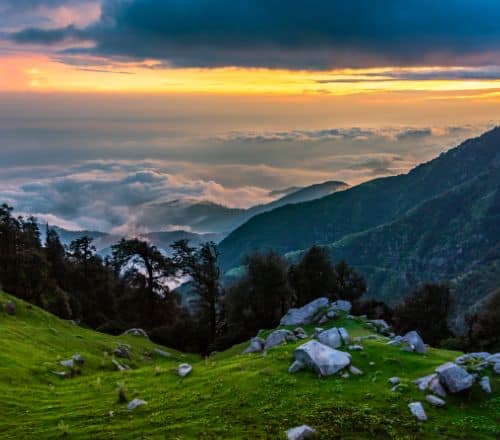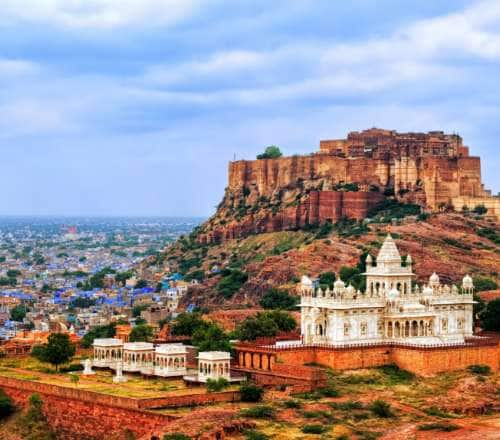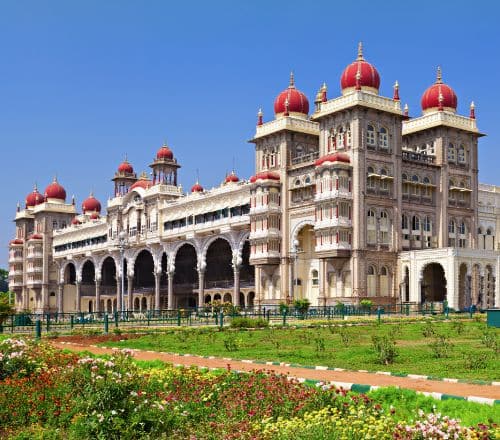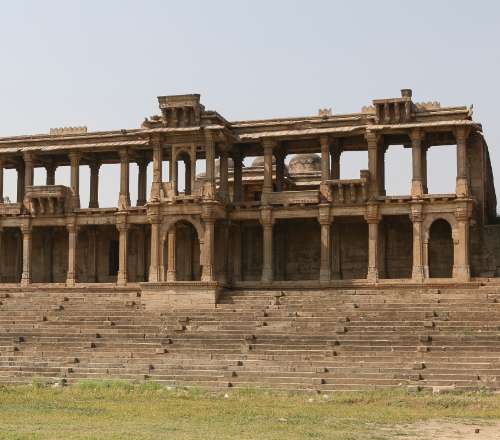Stay logged in to proceed with bookings, orders and offers.
On changing the terminal, you will loose items in your cart. Are you sure you want to change your terminal?
What happened when I travelled to Rajasthan, not for the desert but for its water bodies.
I've always enjoyed busting myths about a place. To see the look of surprise on people's faces when they learn about an unexpected destination in a particular place is priceless. I intended to do just that when I planned a July getaway to Rajasthan, to explore its waterfalls.
Contrary to popular belief, Rajasthan isn't solely a desert; it is also home to beautiful waterfalls. The Mewar region is known for its lush greenery and abundant rainfall, making it the perfect place for waterfalls. I was planning a trip to Kota to see the canyon at Garadia Mahadeo. While I was doing my research, I also looked for interesting places I could visit nearby, and was able to identify three waterfalls that I was keen to explore—Padajhar Falls, Chulia Falls and Menal Falls. My journey commenced from Delhi. On Friday night, I took a train to Kota, where I made a stopover to see the canyon on the Chambal River at Garadia Mahadeo. From Kota, I took a bus to Rawatbhata. The journey to Rawatbhata from Kota was very beautiful. It was drizzling throughout, and the trees glistened in the rain. Rawatbhata is known for its nuclear power station and has a small town where government employees reside along with a small number of locals. The small city centre had a few lodges; I decided to spend the night in one of them. The next day, after lunch, I took an autorickshaw to Padajhar Falls. The roads were muddy and flooded due to heavy rains.
After about an hour's journey, we finally arrived at Padajhar. The area was blessed with a rift valley, where a small tributary of the Chambal River flowed. However, during the monsoons, this tranquil rivulet transforms into a roaring giant. Following a path, I approached the waterfall. A small bridge over the river was flooded, and the nearby trees were immersed a foot deep in water. A flight of stairs led me to the base of the waterfall, and the sight that greeted me exceeded my wildest imagination. The water gracefully cascaded down the cliff, creating a misty ambience that filled the air. I could feel the refreshing spray on my face and hear the powerful roar of the water as it crashed against the rocks. At the bottom, the waterfall formed a large pool, but the forceful current made it too perilous to venture into. Nevertheless, I stood there for a long time, mesmerised by the sheer beauty of the waterfall. Eventually, I began my hike back to the top, feeling tired but immensely content. The encounter with this magnificent waterfall left me with a sense of fulfillment and awe, making the journey truly memorable.
The next stop was Chulia Falls. From Rawatbhata, the ride was just as bumpy and dusty, but the scenery was even more beautiful. We drove through lush green forests and past the Rana Pratap Sagar reservoir. After about an hour, we finally arrived near Chulia. Chulia or Chuliya is a distinct waterfall in India, shaped by unique geological factors. After a dam was constructed on the Chambal River in Rawatbhata, the downstream riverbed was exposed due to limited water flow. Unlike most rivers that flow on flat alluvial soil, the Chambal River flows on a hard plateau formed by the degradation of igneous rocks. The natural circular formations on the riverbed, resulting from weathering processes, gave rise to several waterfalls, some as deep as 5 meters. Among these breathtaking waterfalls lies Chulia Fall. As I walked on the riverbed, I couldn't help but be awestruck by the diverse topography that India has. Some parts of the riverbed were ten to twenty feet deeper than the point where I stood. As the sun set, and it started growing dark, I returned to my hotel.
The next morning, I hopped on a bus to Chittorgarh. The landscape was changing and small hillocks were now visible. Once I reached Katunda, I took another bus to Menal village. The journey took about 30 minutes and cost me around Rs. 30. Once I reached the village, I had to walk for about 10 minutes to reach Menal waterfall. The walk was pleasant, with green fields on both sides of the road. I could see the waterfall from a distance, and it looked breathtaking. The water was crystal clear, and the sound of it falling was soothing to the ears. The waterfall was surrounded by lush greenery, and the air was fresh and cool. I spent some time at the waterfall, taking in its beauty. I climbed up to a large rock that was near the waterfall and sat there for a while, engrossed in the scenery. I also took a dip in the pool at the base of the waterfall. The water was cold, but refreshing, and it felt great after the long journey. After spending a few hours at the waterfall, I headed back to Menal village to catch the bus to Chittorgarh. If you're considering a getaway to Rajasthan, I highly recommend taking the offbeat route to explore the state. Beyond the common perceptions of heat, deserts, and sparse greenery, you'll discover a lush green haven that will leave you spellbound.





The Adani One expressly disclaims all liability, direct and indirect, in respect to actions taken or not taken based on any or all the contents of this Blog. The Blog is an opinion of the contributor based on the collation of data from various sources and is provided only for information purpose. Adani One does not canvass, advertise, solicit, invite or induct for any product, merchandise, information, brand or any other materials mentioned in the Blog, nor does it obtain any monetary benefit from the same. Reader is advised to read and apply his/her intellect and discretion in this regard. Any Intellectual Property mentioned in this blog belongs to the rightful owner. We do not intent to claim any interest over the same.